.
It started out as just a visit to a military site of historic interest………….!.

In planning our return trip from the Czech Republic we found ourselves passing close to the town of Colditz in the former German Democratic Republic. OFLAG IVC – the impregnable and escape-proof prisoner-of-war camp located in Colditz Castle which boasted one of the highest records of successful escape attempts! Just the name Colditz – so familiar from books, documentaries and films – is enough to evoke immediate thoughts of heroes, daring exploits, inspirational ideas and triumph over adversity. An opportunity not to be missed. .

A passing comment before the holiday brought the startling news that Czechoslovakian Airmen serving in the Royal Air Force had been incarcerated in Colditz; surprising as the website of “Schloss Colditz” – while advising that between 1939 – 1945 the Castle had been home to a prisoner-of-war camp for Allied Officers from Great Britain and the Commonwealth, France, Belgium, Holland and Poland – made no mention of any prisoners from Czechoslovakia..
Suddenly the planned visit to Colditz Castle took on extra meaning. An email request to the Castle Museum Administration to meet with an archivist to discuss the Czechoslovakian prisoners-of-war brought only an invitation to join a guided tour of the Castle and the comment that they had little information about the group from Czechoslovakia. This established that the Museum Administrators were aware of the Czechoslovakian contingent, but did not explain why they were absent from the website?.
At this stage of the proceedings contact was made with Gavin Worrell, a renowned military historian with specialist knowledge of Colditz. Gavin has details of the Czechoslovakian Airmen incarcerated at Colditz, and was aware of the lack of acknowledgement by the Museum officials. He was able to confirm that the Museum displays contain no references to Czechoslovakian personnel having been at the Castle during World War 2. .
On Gavin’s recommendation we pre-booked ourselves on the English-language extended tour to be led by Steffi Schubert, advised as being the most knowledgeable of the guides about the WW2 period, then waited with some impatience for our holiday………………………………………… .

Our first sighting as we drove into the town centre over the Mulde river (the same journey that the prisoners walked from the railway station on arrival in Colditz) did not disappoint. There was the infamous castle dominating the town and surrounding areas and impressing with its size and still forbidding aspect. This is peacetime and we have the benefit of hindsight; still we felt a chill at the thought of being incarcerated behind those walls even for a short while. We tried to imagine how the prisoners must have felt on seeing their new prison for the first time, not knowing if the war would be won or if they would ever see their homelands again..

We hurried to get to the castle – then couldn’t find the way to the Castle car park! After having tried to drive the wrong way down a one-way street we gave in and asked directions (better signing would be a distinct advantage!). We were now running late for the tour so after momentarily admiring the view over the town we hurried up the path to the former guardhouse (now the Museum Administration Office) – reflecting as we did so that our enthusiasm would not have been matched by the prisoners. .

'Prisoners’ yard', with clocktower in background
Then we were met with the disappointing news that Steffi Schubert was unwell and that the extended tour would not take place that day! .
After all this effort we were not to be thwarted, however, so we joined the English-speaking ‘standard’ tour which was about to leave and entered the “prisoners’ yard” through the archway..

A nice touch was the cut-out figures placed strategically around the “prisoners’ yard” featuring some of the famous prisoners in their escape disguises – the German guard cut-out is Airey Neave, the lady is Lt Boule, and the officer and a dummy, is a Dutch ‘minder’ with his dummy ‘Max’.

'Max' and his Dutch minder
On our left we saw the rooms occupied by the British & Commonwealth prisoners and, as we had learned, also the Czechoslovak contingent. .

Polish Memorial
This part of the Castle was not open to the tour so we crossed the courtyard, entering the Castle buildings by the Memorial to the Polish prisoners (erected in 2005), where there was a photographic display of activity at the Castle during WW2. .

The remains of the altar in the chapel
From here we were led to the Chapel where the guide told us about the French tunnel which had started from the top of the clock-tower, some 90 feet above ground and led down to the cellar where they intended to break through into the crypt! This had been a major civil engineering project, carried out 24 hours a day for 8 months, when it was discovered by the guards. The hole has been made so that visitors can look at the French tunnel coming down from the clock-tower..

The French tunnel started in the attic of the clock-tower and dropped down 90 feet to the cellar; they then cut a horizontal shaft through the wall facing the chapel; after digging a distance of 15 feet they turned upwards and reached the timbers supporting the chapel floor; the shaft then ran diagonally under the chapel. The total horizontal distance dug was about 100 feet .
We were also taken to the cellars and the terrace, entertained along the way with descriptions of the escapes (6 Britons made successful “home runs” from the Castle or grounds, Airey Neave being the 1st) and of the more famous of the escape attempts, such as “Franz Josef” and the glider. The tour culminated in the small Castle Museum where there were more photographic displays and artefacts relating to the prisoners-of-war..

PoW's in the courtyard.
Much of the Castle is not open to the public but what we saw was interesting, the tour was generally informative, and it was definitely a worthwhile visit. Within the confines of this article we can’t even begin to retell the fascinating story of Colditz Castle in WW2, so for those interested in learning more about the Castle as a prisoner-of-war camp, the successful home runs and the attempted escapes, we recommend you to Gavin Worrell’s website..

Regretfully our visit did not advance our knowledge and understanding of the experiences of the Czechoslovakian airmen at Colditz Castle, although the following basic data has been established:
As well as the persistent escapers who were treated as standard prisoners-of-war, Colditz Castle held another category of prisoners described in German as the “Prominente”. The main category of “Prominente” prisoners – who were segregated and effectively held as “hostages” – were primarily relatives of Allied VIPs (such as Giles Romilly, nephew to Winston Churchill’s wife; Viscount George Lascelles, nephew to George V; Captain George Haig, son of WW1 Field Marshall Douglas Haig; Tadeusz Bór-Komorowski, Commander of Armia Krajowa and the Warsaw uprising) .
As Czechoslovakia was a “Reich Protectorate” – i.e. German territory – Czechoslovakian citizens who took up arms against the Reich were viewed as traitors. The Czechoslovakian contingent were held as “Prominente Second Class”, considered to be war criminals with a “sentence of death” over them.
The Czechoslovakians were located with the British prisoners, but in segregated accommodation. Unlike the standard prisoners-of-war the Czechoslovakians were held under constant guard. This allowed no possibility for escape attempts.
Of the Czechoslovakian airmen who served in the Royal Air Force and were taken prisoner some 35% found themselves ultimately incarcerated at Colditz Castle.
19 Czechoslovakian airmen – 13 from Bomber Command and 6 from Fighter Command – were prisoners at Colditz Castle:

BATELKA Karel, Sgt, 311 Sqn., Air Gunner
Captured: 17/01/1942, on bombing raid to Bremen, flak damage above target, crashed Holland,
arrived at Colditz: 22/09/44.
.
.
.

BRYKS Josef, F/Lt, 242 Sqn., Pilot
Shot down 17/06/1941, near Lille, France.
arrived at Colditz: 07/11/44.
.
.
.

BUFKA Vilém, W/O, 311 Sqn., Pilot
Captured: 22/06/1941, Bremen, Germany – shot down by night fighter over Holland, captured 24/6/41.
arrived at Colditz: 10/10/44.
.
.
.

BURDA František, F/Lt, 310 Sqn., Pilot
Captured: 27/02/1943, shot down by flak over France.
arrived at Colditz: 10/09/44.
.
.
.

BUŠINA Emil, P/O, 311 Sqn., Navigator
Captured: 06/02/1941, captured when aircraft was disorientated and landed by mistake on Luftwaffe airfield at Bolougne, France.
arrived at Colditz: 10/9/44.
.
.
.

ČERNÝ Otakar, F/Lt, 311 Sqn., Wireless Operator
Shot down 17/07/1941 on raid to Hamburg, Germany, captured 19/7/41.
arrived at Colditz: 26/10/44.
.
.
.

CIGOŠ František, F/Lt, 311 Sqn., Pilot
Captured: 06/02/1941, captured when aircraft was disorientated and landed by mistake on Luftwaffe airfield at Bolougne, France.
arrived at Colditz: 22/09/44.
.
.
.

DVOŘÁK Bedřich, P/O, 312 Sqn., PIlot
Captured: 03/06/1942, shot down over France.
arrived at Colditz: 09/01/45.
.
.
.

CHALOUPKA Čeněk, Sgt, 312 Sqn., Pilot
Shot down 06/10/1941, near Dutch coast.
arrived at Colditz: 31/08/44.
.
.
.

NOVOTNÝ Emanuel, W/O, 311 Sqn., Pilot
Shot down 16/10/1940, on raid to Bremen, Germany.
arrived at Colditz: 10/10/44.
.
.
.

PROCHÁZKA Václav, W/O, 311 Sqn., Pilot
Captured: 20/10/1941 on raid to Bremen, Germany, forced landing in Holland.
arrived at Colditz: 22/09/44.
.
.
.

SŮSA Josef, W/O, 311 Sqn., Air Gunner
Captured: 20/10/1941, raid on Bremen, Germany, forced landing in Holland.
arrived at Colditz: 27/10/44.
.
.
.

ŠIŠKA Alois, Sgt, 311 Sqn., Pilot
Captured: 28/12/1941, raid on Wilhelmshaven, flak damage above target, crash landing in North Sea.
arrived at Colditz: September 1944.
.
.
.

TONDER Ivo Peter, F/Lt, 312 Sqn., Pilot
Captured: 03/06/1942, shot down over France.
arrived at Colditz: 09/01/45.
.
.
.

TROJÁČEK Karel Josef, F/Lt, 311 Sqn., Pilot
Captured: 23/09/1940, raid on Berlin, Germany, damaged by flak above target, crashed in Holland.
arrived at Colditz: 09/01/45.
.
.
.

TRUHLÁŘ Jan, W/O, 312 Sqn., Pilot
Captured: 09/06/1941, shot down near St Omer, France.
arrived at Colditz: 22/09/44.
.
.
.

URUBA Petr, W/O, 311 Sqn., Pilot
Captured: 06/02/1941, captured when aircraft was disorientated and landed by mistake on Luftwaffe airfield at Bolougne, France.
arrived at Colditz: 10/09/44.
.
.
.

VESELÝ Erazim, F/Lt, 311 Sqn., Navigator
Captured: 20/10/1941, raid on Bremen, Germany, emergency landed in Holland.
arrived at Colditz: 15/09/44.
.
.
.

ZAFOUK Jaroslav, F/Lt, 311 Sqn., Navigator
Captured: 17/07/1941, raid on Hamburg, Germany.
arrived at Colditz:
.
.
.

Some of the Czech RAF PoW's from Colditz, from left to right: Bušina Emil, Cigoš František, Trojáček Karel, Veselý Erazim, Bufka Vilém, Procházka Václav, Batelka Karel, Sůsa Josef, Urba Petr, Truhlář Jan
Often overlooked is that another Czechoslovak serviceman was also imprisoned at Colditz. Captain Richard Zdráhala, who was serving with the Free French Army when captured with other Free French Forces during the battle for Bir Hakeim, Libya.

ZDRÁHALA Richard, Captain, Free French Artillery
Captured: 11/06/1942, captured near Bir Hakeim, Libya.
arrived at Colditz: April 1944
.
.
.
In August 2003 Alois Siska and Petr Urba return to visit Colditz for the first time since their liberation from there in April 1945

This feels like an unfinished story………….. The individual – and often unique – histories of the Czechoslovakian airmen incarcerated at Colditz Castle need to be told and their presence during WW2 recognised by the Museum Administration.
Perhaps one day…………………………………….
Article last updated 7 May 2012
.
.

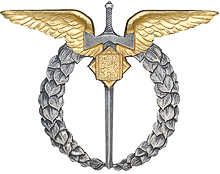




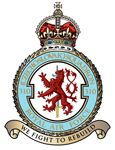
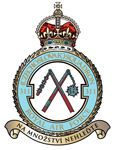
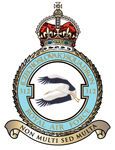
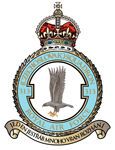


Absolutely fascinating information and a wonderful tribute to a marvellous cohort of men.